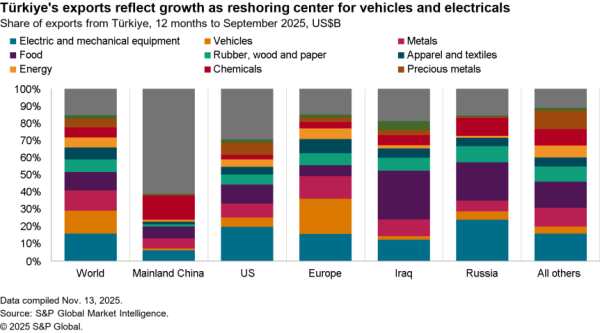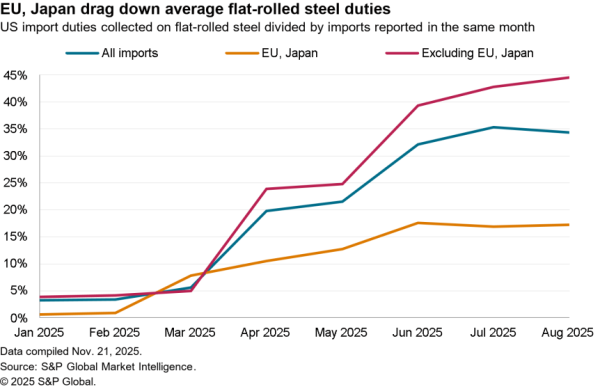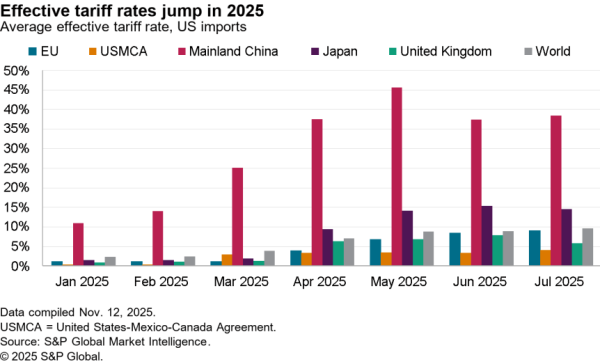The months of October and November are normally the peak for U.S. mobile phone imports, with this year including the release of the iPhone 7 in September and the Google Pixel in October. In numbers of handsets October’s imports were 6.1% lower than a year earlier, Panjiva data shows, at 27.2 million.
Imports from South Korea fell 27.7%, which is unsurprising given the production cancellation and recall of Samsung Electronic’s flagship Galaxy Note 7. Yet Vietnam – where both Samsung and LG have factories – saw a 55.8% increase suggesting other models did well. Taking the two together as a proxy for Samsung U.S. imports increased 8.8%.
It was imports from China, which accounted for 21.9 million handsets, that dragged the overall figure down with an 8.2% fall. Given the prominence of the model, this suggests the post-launch shipments of the iPhone 7 in number of handsets may have been well down on a year earlier.

Source: Panjiva
It’s not all bad news however. Panjiva’s analysis of the dollar value of U.S. imports shows a smaller decline of 5.1% in total and 6.3% from China. This implies that the average value per phone imported from China increased 2.1% on a year earlier $233, the highest yet. Taiwan notably saw a 63.7% increase to $259, likely reflecting the production of the Google Pixel there.
The threat remains from a potential tariff on Chinese imports by the incoming Trump administration. While threats against Apple first made in Fortune magazine have not been repeated, and though Commerce Secretary Wilbur Ross has alluded to tariffs being only a small part of the U.S. negotiating stance, a tariff of $65-$70 per handset shouldn’t be ruled out. This is based on the average value of Chinese handset exports to the U.S. over the past 12 months and a 35% tariff rate.

Source: Panjiva
Looking at China’s exports, the total value in October fell 8.1%. This was pulled down by a 24.6% drop in shipments to Hong Kong (often exported across Asia) and 17.1% drop in exports to countries other than the U.S., the EU and Japan. This suggests exports to the emerging markets have slipped. That has resulted in total Chinese shipments have fallen in nine of the past 12 months. Exports to the European Union and Japan increased by 12.9% and 13.3% respectively, suggesting those markets are proving more fruitful for the likes of Apple than the U.S.

Source: Panjiva
The two largest exporters, Foxconn and Pegatron, outpaced the pack with a 8.6% and 4.5% growth in exports respectively. Given the importance of Apple as a customer this suggests the iPhone 7’s success can be found outside the U.S. Unsurprisingly Samsung was a major laggard with a 56.6% drop in its exports, while Sony’s exports dropped 57.5% despite the launch of its Xperia XZ. Among the second tier players Huawei’s emerging-market focussed handsets still appear to be doing well vs. the rest of the group with a 15.6% increase.

Source: Panjiva




